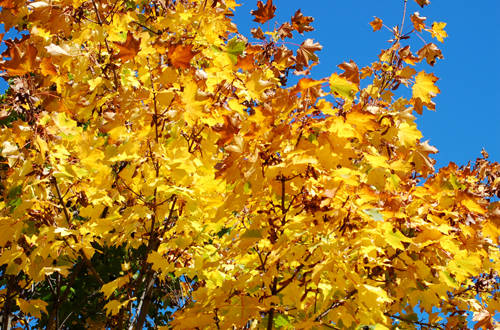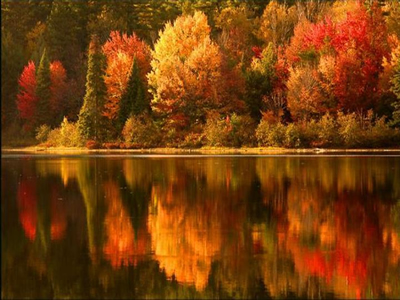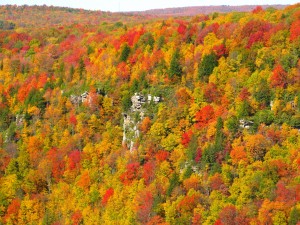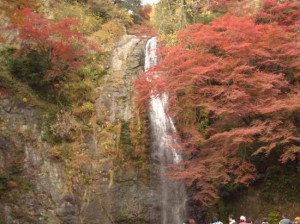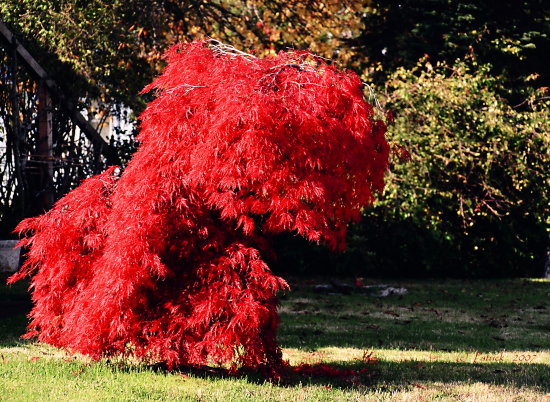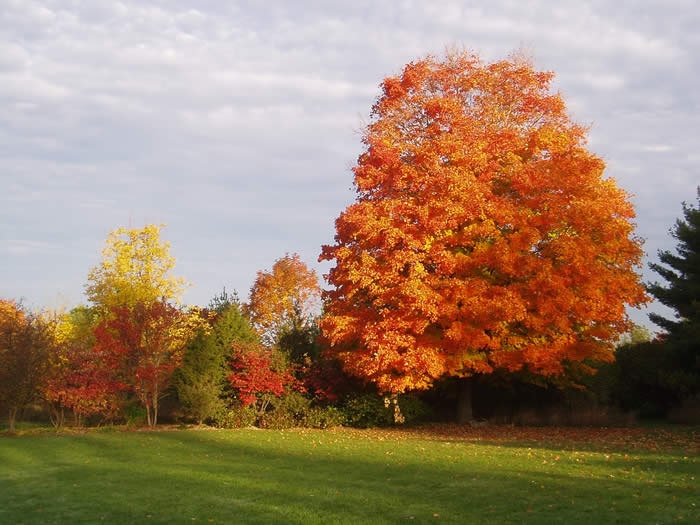Now, as omnipresent as the changing of the color of leaves in the autumn is, I’ll bet that many people don’t know how and why this transformation takes place. Sure, you might have the general idea (It is getting colder, the leaves will freeze, etc..) but I’ll bet that you don’t know the whole story. The annual changing of the colors is something that just comes naturally to those of us who live far enough north to enjoy the yearly onset of deep reds and bright bursts of orange in the trees. We often take for granted the crispy leaves and that slight smell of decay that comes with the fall. I don’t want to give you the impression that you should know this information, because personally I didn’t know the answer to the question to “Why do leaves change color and fall off” until I had taken a botany course in college. I hadn’t really thought about the processes, systems, reasons, and mechanisms of the fall colors before, learning about it in class was a bit of a “Duh!” moment for me. To have something so huge and eye catching to a biologist as myself, and not know the answers was unfortunate. I hope that you, my readers, would concur. Fortunately for you, I did eventually learn the important details about this annual arboreal event. I am glad to share it with you. (I would like to apologize for the title of this article as well… I couldn’t help myself)
Lets start right at the beginning.
What triggers the color change to take place?
Now, there are 2 things that happen in the fall that might cause these changes to take place. The days are getting shorter, and the temperature is going down. Only one of these is responsible for triggering the change in leaf color. It is a common misconception that the leaves change color as it gets colder outside, for it is actually the shortening of the days that cause trees to change their leaf color. Plants in general respond to changes into light stimuli over all other environmental factors. Light is probably the single most important thing to a plant, so this makes sense. The biological term for the changes of light in the seasons is the “photoperiod”. This stands for the different day/night cycles that can be found that a plant follows. When moving from the summer photoperiod of long days to the winter photoperiod of short days these color changes take place. The change in temperature is very important though, while it isn’t the trigger for the change, it is one of the reasons that trees need to lose their leaves in the fall.
Why do trees need to lose their leaves?
I mentioned this a bit in the first part of the post, but lets expand here. Leaves are where the food for a plant is made. Think of them as little Oscar Mayer factories, if you are not partial to processed meats… think of a… tofu factory. All during the summer these factories utilize the plant pigment chlorophyll. This pigment is also what gives leave their green color. Through the long and complicated process of photosynthesis these little pigments use sunlight to form sugars out of CO2. These sugars travel out of the leaf through the stem and head into all parts of the tree. When the days grow shorter and the temperature drops the trees do all they can to preserve these little factories. Think of it like this, the auto manufacturing plant is closing (outsourced to mexico) and the auto company needs to save money. Rather than letting that factory fall into disrepair, they clean it up, gut it for parts and leave the building behind. When people want to buy more cars, they use the parts they saved and build a new factory with the parts they saved. It makes both arboreal and business sense, for both excess waste equals death.
How does the leaf color change process happen?
Pretty simple. The change in photoperiod (the amount of light/dark in a day) triggers a response in the leaves of the plant. Beginning right near the start of the fall season, leaves begin to close up shop. All throughout the summer the chlorophyll in the leaf cells are living and dying, multiplying and dividing. When the fall season hits, the plant begins closing off the pathways to the leaves for essential minerals and water to replenish the dying cholrophyll. This is just the beginning of the process. Production in the factory slows down, as the company begins to shut down assembly lines, while keeping a few essential ones open. To continue on with the factory analogy, lets think about who is doing the breaking down of the machinery. In plants this is accomplished through a protein in the leaves known as protease. Think of proteins as very specialized organically based substances built to accomplish a task. They are often the building blocks of many physiological processes in both plants and animals. This protein is very specialized to break down these worn out chlorophyll cells. In a factory, these would be the temp workers hired on to tear down the lines. Through the process of breaking down the chlorophyll, new, hidden pigments are seen in the leaves. These pigments are in present the chlorophyll year round, but they are masked by the green pigment. Once the chlorophyll is broken down, these pigments are finally able to be seen. Depending on the species of the plant these pigments, known as carotenoids, can range from light yellow to bright orange. Carotenoids are the pigments that make up the colors in many plants. They put the orange in carrots. There is another type of pigment found in fall leaves, and they are known as Anthocyanins. These pigments, unlike the carotenoids, are not found in the leaves all year round. As fall approaches and the nutrients and water are being shut down, the food production in the chlorophyll changes. This slight change in process (which happens to accommodate for lower amounts of nutrients and water) creates these pigments as a by-product. These pigments are dark and almost purple in color. When they mix with the other pigments, you get the deep reds and dark oranges found in many trees. A great example of this is in the Japanese Maple tree, which almost turns a surreal shade of fire-engine red in the fall.
Now that the leaf is a beautiful orange, how does it fall off the tree?
Once the leaf has broken down the chlorophylls and other cells and transported the nutrients recovered from that process, we see the beginnings of abscission. This process begins all the way when the leaf is originally formed in the spring. The CEO of the auto factory is hedging his bets by installing the explosives ahead of time to quickly tear down the factory when it closes. Between the stem and the branch of the tree, there is a layer of cells formed known as the abscission layer. This layer is highly sensitive to a particular plant hormone known as auxin. This is a very common hormone found all throughout the tree year round. During the summer months, the amount of auxin found in the leaves is pretty much the same as the rest of the plant. Once the leaves begin to slow production and break down, the levels of auxin exiting the leaves and into the tree lowers. This triggers the abscission layer to stop cellular elongation, which in turn makes the cells more brittle. As time goes on, these cells become more and more brittle, until eventually the weight of the leaf becomes to much, and a gust of wind separates the leaf from the tree. The leaf then falls to the ground to join its fallen comrades where it can be piled up, and then jumped upon.
Bringing it all back Home
So, lets summarize this extremely complicated process. In the fall, the days become shorter, changing the photo period. This change triggers the tree to stop sending so many minerals and water to the leaves. This lack of nutrients changes the photosynthesis process, and Anthocyanins are created. The protein protease is triggered and begins to break down cells for parts. By breaking down the cells and their parts, the hidden carotenoids and newly created Anthocyanins begin to show through. These pigments make the leaves any color from yellow to deep red (depending on the mixture of pigments). As the food/sugar production in the leaves slows down, so does the flow of the hormone auxin. This triggers the abscission layer (the layer between the stem and branch) to become brittle, and as time goes on, eventually this bond breaks and the leaf falls. This whole process is done to preserve nutrients and waste as little as possible before moving into the starving months of winter.
I hope this all makes sense, if I was a bit confusing at times, I am sorry. This is a very complicated process and it is tough to judge how to keep it simple enough to understand but technical enough to educate. Please send me an email at dude@biologydude.com if you have any questions.
